THE GOOD LIFE -- What adult beverage does James Bond most often consume? If you said the vodka martini, you’d be mistaken.
“I see you are a connoisseur, Monsieur Bond.” (Achille Aubergine, ‘A View to a Kill’)
From the Dom Perignon ’53 that lost its chill in Goldfinger, to the Bollinger La Grande Année that Bond orders ‘for one’ in Casino Royale; the beverage that’s most often enjoyed by James Bond, by a substantial margin, is a certain sparkling white wine more commonly known as Champagne.
So what is Champagne? To know what Champagne is, you need to understand what wine is.
What is Wine?
At its bare essence, wine is nothing more than fermented grape juice. Wine can be made from many fruits, including strawberries, blueberries, and raspberries; but of course, the vast majority of wine is made from grapes.
What is ‘fermented’ grape juice?
Fermentation refers to the conversion of sugar to alcohol. When a grape is crushed, the natural sugar inside the grape reacts with the natural yeasts on the skins. The yeast consumes the sugars and produces alcohol (and carbon dioxide); thus begins the process of turning grapes to wine. We can also assume that the more sugar present in the grapes, the more alcohol there will be in the resulting wine (so long as the process is allowed to continue to completion). Yeast exists naturally on grapes and grapevines, which is why fermentation occurs with no intervention, but winemakers may also add yeasts to better control the process. ‘Fermentation’ is how wine, beer, and even vinegar are produced, and is the first step in creating alcohol.
How the Wine is Made?
Winemaking is a lengthy procedure, and different processes are used for different grapes and blends. Observing the different processes in creating red and white wine reveals a significant feature about the wine itself.
White wine is made by picking the grapes, crushing and pressing them to extract the clear juice, and then removing the skins from the batch before fermentation. The process for making red wine is slightly different. While the juice of red grapes is also clear, the skins remain mixed in during the fermentation process, and left to macerate, which means to ferment while still in contact with the skins. This is done so the juice can adopt more of the color and tannins from the grape skins. Therefore, the juice from both red and white grapes is clear (or light in color), and it’s the color of the skins that makes the difference in the appearance of wine, specifically red wines.
Yeast is added to the mix during fermentation. Natural yeast was once used, but now most vineyards use manufactured yeasts to ensure a more predictable end result. Fermentation is generally executed in large stainless steel or even concrete vats, as oak barrels tend to be much more expensive.
Fermentation is a very precise business; the liquid must be brought up to the correct temperature, which is usually around 56 degrees or above. Too hot a temperature results in loss of flavor, whereas too cold and the fermentation process could come to a complete halt. Fermentation time can vary from a few days to a few weeks, depending on which type of wine is being made. After fermentation is complete, the wines are filtered and refined, also known as clarification and stabilization, to remove any debris, and finally bottled.
Grapes have become the standard for wines for two reasons. First, there is an acid found in grapes but not other fruits, which preserves the juice for decades or even centuries. Second, there is much more sugar in grapes than in other fruits, which helps to produce stronger wines because almost all the sugar is transformed into alcohol.
What is Champagne?
Champagne is a sparkling wine produced from grapes grown in the Champagne region of France following rules that demand secondary fermentation of the wine in the bottle to create carbonation. Some use the term champagne as a generic term for sparkling wine, but many countries reserve the term exclusively for sparkling wines that come from Champagne and are produced under the rules of the appellation.
Sparkling wine can be made from almost any grape, but true Champagne must be made from Pinot Noir, Chardonnay and Pinot Meunier in the Champagne region of France. Grapes are harvested earlier than usual (about 3-4 weeks) so that the balance of sugar (low) and acidity (high) are at their optimum levels.
What makes it bubble?
At the very bottom of the ‘barrel’ and the cheapest possible method is by simple carbonation, where literally a tank full of wine is pumped with bubbles. This final solution results in a cheap and cheerful but coarser sparkling wine. So enjoy Champagnes with the subtle tiny bubbles, and avoid sparkling wines with large bubbles that look more like ginger ale.
The traditional, and also more costly, method is by adding more yeast to the wine in a bottle, sealing it and putting it through a second. Carbon Dioxide is created in the bottle in the form of small bubbles that cannot escape as the wine is sealed. Made with this method, dead yeast cells or ‘lees’ must be removed before the bottle is sold, and this can only be executed by slowly moving the bottles either by hand or by machine, so that the lees collect at the top of the bottle. This process is known as ‘riddling’. The tops of the bottles are then frozen and the resulting ice collection is popped out, and a correct amount of sugar or ‘dosage’ is put into the bottle and then resealed. A cheaper mode is to use the ‘tank’ method, where a second fermentation takes place and then the wine is bottled under pressure to create the bubbles. This method is used particularly for lower grade champagnes and sparkling wines, and in such wines, the bubbles are much softer.
Deciphering Labels
Like most wines, Champagne has its own set of terms, which can make choosing the correct one a little confusing. Here are a few things to keep in mind.
We already said that sparkling wines had to be from the Champagne region of France to be called Champagne, but other countries have their own version of ‘sparkling’ wines, such as ‘cava’ from Spain, or ‘frizzante or spumante’ in Italy.
Sparkling wines can tend to be sweeter than traditional Champagne, and can be made from more or less any grape variety in their specific region. Here’s how to detect the level of sweetness in a sparkling wine:
• Extra Brut: (less than 6 grams of residual sugar per liter)
• Brut: The most common style of Champagne and sparkling wines, and also the driest, although some with terms such as "Extra Brut" can be even drier. (less than 12 grams)
• Extra Dry: In the twisted lexicon of wine terms, these actually mean the wine is slightly sweeter than Brut. Go figure. (between 12 and 17 grams)
• Sec: (between 17 and 32 grams)
• Demi-sec: (between 32 and 50 grams)
• Doux: Sweeter styles of Champagne. (about 50 grams)
Other categories of sparking wine include:
• Blanc de Blancs: A sparkler made exclusively from white grapes, usually chardonnay. Usually lighter in body.
• Blanc de Noirs: Made from red-wine grapes such as pinot noir and pinot meunier, though the skins are removed quickly so the wine remains white. Tend to be richer and more full-bodied.
• Rosé Champagne: The rosé wines of Champagne (also known as Pink Champagne) are produced either by leaving the clear juice of black grapes to macerate on its skins for a brief time (known as the saignée method) or, more commonly, by adding a small amount of still Pinot noir red wine to the sparkling wine cuvée. Champagne is typically light in color even if it is produced with red grapes, because the juice is extracted from the grapes using a gentle process that minimizes the amount of time the juice spends in contact with the skins, which is what gives red wine its color. Rosé Champagne is one of the few wines that allows the production of Rosé by the addition of a small amount of red wine during blending. This ensures a predictable and reproducible color, allowing a constant Rosé color from year-to-year.
Ideal Serving Temperature
It’s no secret that Ian Fleming’s James Bond preferred his cocktails to be served “very strong and very cold and very well made.” But you may find that 38 degrees is much to cold to unlock the flavors and aromas of Champagne.
“My dear girl, there are some things that just aren't done, such as drinking Dom Perignon '53 above the temperature of 38 degrees Fahrenheit. That’s just as bad as listening to the Beatles without earmuffs!” (James Bond, ‘Goldfinger’)
Experience shows that ideal serving temperature is 45-50°F. Below that temperature the wine is too cold making aromas harder to detect. Above 50°F the wines appear “heavier” and less bright.

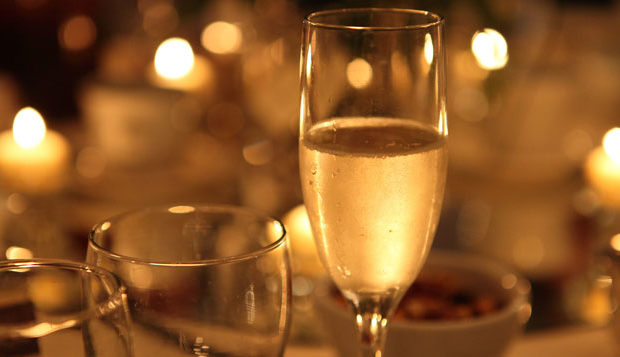

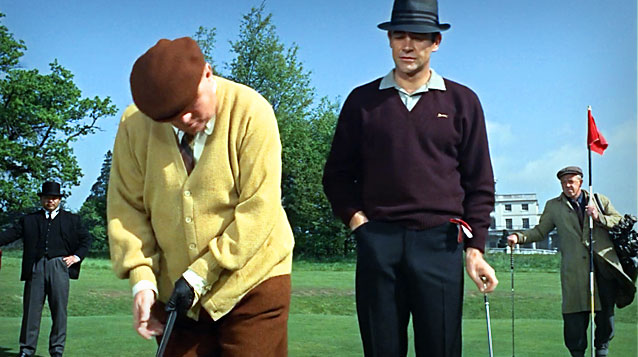
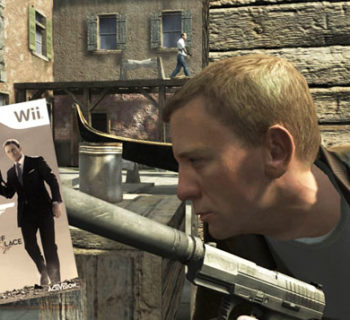
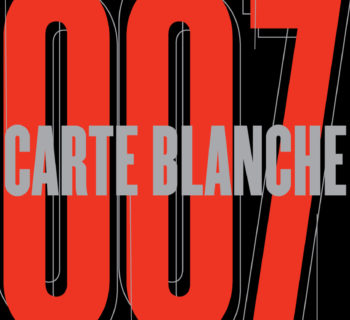
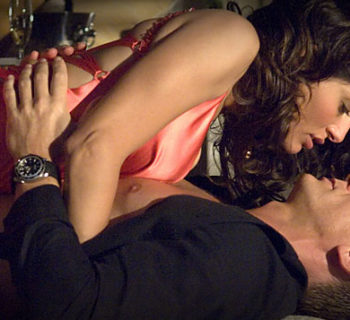
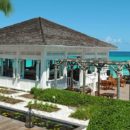
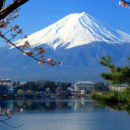


Top 5 Rejected James Bond Theme Songs
Top 5 Rejected James Bond Theme Songs
The "No Time To Die" Review